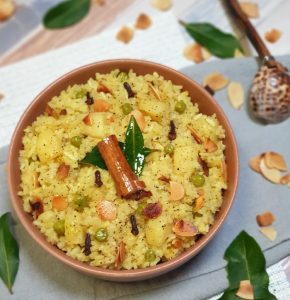Oxygen absorbers and airtight containers (such as Mylar bags) are the best way to store dry foods like flour, rice, and beans. If you can’t find oxygen absorbers where you live, here are 5 alternative options for long-term food storage.
Also, read our guides to using oxygen absorbers and Mylar bags for long-term food storage.
1. Nitrogen Flushing
Nitrogen flushing is a food preservation method where gas is pumped into a container. The nitrogen pushes out the oxygen in the container. The container is then sealed, creating a low-oxygen environment. It is commonly used for coffee, chips, and snacks.
While it’s possible to do nitrogen flushing at home, it isn’t easy because you need specialized equipment, including a nitrogen gas cylinder, airtight containers (such as #10 cans), and a way to seal them.
You also have to be very careful when doing nitrogen flushing. Nitrogen is non-toxic and makes up most of the air we breathe. However, if the tank leaks in an enclosed space, it can displace the air and cause asphyxiation.
2. Dry Ice
Dry ice is simply carbon dioxide. At extremely low temperatures, it is a solid. When the dry ice warms to room temperature, it becomes a gas.
To use dry ice for food storage, add some dry ice to the bottom of your container and then put the food on top of it. You wait for the dry ice to turn back into a gas and seal the container. When done correctly, the container will contain almost no oxygen.
While dry ice is effective for long-term storage, there are some precautions you must take. For example, if you seal the container too soon, pressure can build up and cause the container to explode!
3. Rotating
If you don’t have a way to remove the oxygen from your dry staples, you’ll need to rotate it. This is tricky with a long-term food stockpile but not impossible.
You’ll need to be extra diligent about only stockpiling foods that naturally have long shelf lives (pasta is a good one) and also treating foods like grains to prevent your stockpile from getting insect infestations.
4. Boot or Glove Hand Warmers
Hand warmers contain the same ingredients as oxygen absorbers. Because of this, they are commonly recommended as an alternative to oxygen absorbers. One prepper even tested that they work with an oxygen meter.
Note that hand warmers are designed to create heat and not to absorb oxygen. Because of this, traditional hand warmers don’t work well in low-oxygen environments. You must use hand warmers designed for warming boots or gloves, as these still work well without much oxygen.
Even though hand warmers work for food storage, it still isn’t recommended that you use them. Here’s why:
- Hand warmers aren’t always food-safe. The hand warmers may contain things like vermiculite or asbestos, depending on the brand. You don’t want this in with your food!
- They contain moisture. Some hand warmers may contain a lot of moisture to produce a better heat reaction. You don’t want to add this moisture to your food storage.
- Can’t be sure how many to use. You can’t be sure how much oxygen one hand warmer absorbs – and you don’t want to leave your food storage to guesswork.
- It isn’t cheaper. Oxygen absorbers used to be expensive, so hand warmers seemed like a good cheap alternative. Now, it’s possible to find OAs for cheap, especially if you buy in bulk.
5. Vacuum Sealing
Vacuum sealing involves using a special machine to remove the air from the packaging. This allows the food to last longer.
However, vacuum sealing is NOT an acceptable alternative to oxygen absorbers.
This is because vacuum sealing does not remove all the oxygen from a container. It also removes oxygen from around the food and not inside it. Some foods, such as beans, actually have a lot of oxygen in them. If there is still oxygen in the container, you risk insect infestations in your food.
Further, vacuum sealer bags will eventually leak, allowing oxygen to return to the food. If you want to use vacuum sealing for long-term food storage, you will be better off with adapters that work on jars like the ones by FoodSaver.
Make Your Own
It is possible to make your own OA’s although we don’t recommend it. Read this post for more details on making DIY oxygen absorbers.
For more, read: Is Vacuum Sealing Good for Long-Term Food Storage?

















